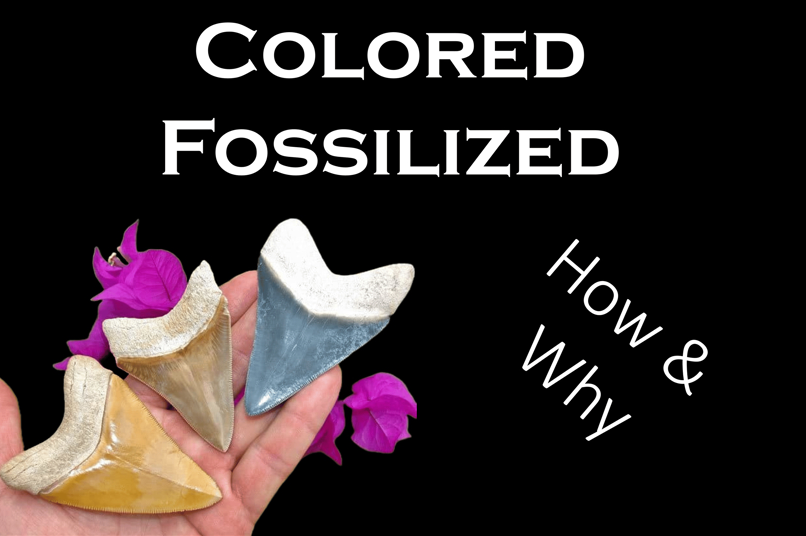
Have you ever wondered why fossilized shark teeth are not predominantly white, but instead come in a variety of colors? From shades of brown to dark gray, these ancient teeth exhibit a wide range of hues. Contrary to popular belief, the coloration of fossilized shark teeth has nothing to do with the age of the fossil or the type of shark it once belonged to. In fact, the true reason behind the colored appearance of these teeth is a fascinating scientific phenomenon.
The Composition of Shark Teeth
To understand why fossilized shark teeth display such diverse colors, it is important to first examine their composition. Shark teeth are primarily composed of a mineral known as hydroxyapatite, which is a crystalline form of calcium phosphate. This mineral is also found in the bones and teeth of other vertebrates, including humans.
Hydroxyapatite is naturally white in color, so one might expect fossilized shark teeth to retain their original white appearance. However, the process of fossilization can lead to various factors that contribute to the coloration of these teeth.
Factors Influencing Coloration
Several factors can influence the coloration of fossilized shark teeth:
1. Mineral Impurities
During the fossilization process, minerals from the surrounding sediment can infiltrate the porous structure of the tooth. These mineral impurities can introduce different colors to the tooth, resulting in a range of hues. For example, iron oxide impurities can cause the teeth to appear brown or reddish, while manganese oxide can give them a black or dark gray color.
2. Chemical Reactions
Chemical reactions can also occur within the tooth during the fossilization process. These reactions can alter the composition of the hydroxyapatite, leading to changes in color. For instance, exposure to certain elements or compounds in the surrounding environment can cause the tooth to take on a yellow or greenish tint.
3. Fossilization Conditions
The conditions under which a tooth is fossilized can greatly impact its coloration. Factors such as temperature, pressure, and the presence of organic matter can all influence the final color of the fossilized tooth. For example, teeth that are fossilized in oxygen-rich environments tend to retain their original white color, while those fossilized in anaerobic conditions may develop darker hues.
The Significance of Coloration
The coloration of fossilized shark teeth serves as a valuable tool for paleontologists and researchers. By examining the colors and patterns present in these ancient teeth, scientists can gain insights into the environment in which the shark lived and the conditions under which it fossilized.
For example, the presence of certain mineral impurities can indicate the type of sediment in which the shark lived. Teeth with a reddish-brown coloration may suggest a sandy environment, while those with a darker gray or black coloration may indicate a muddy or clay-rich habitat.
Additionally, the coloration of fossilized shark teeth can provide information about the preservation process. Teeth that have undergone minimal alteration during fossilization are more likely to retain their original white color, while those that have experienced significant chemical reactions or mineral infiltration may exhibit a wider range of colors.
Preserving the Colors
Preserving the natural colors of fossilized shark teeth can be a challenging task. Over time, exposure to light and oxygen can cause the colors to fade or change. To prevent this, collectors and researchers often take measures to protect the teeth.
One common method is to coat the teeth with a clear, protective sealant. This sealant helps to shield the tooth from environmental factors that could lead to color alteration. Additionally, storing the teeth in a controlled environment, such as a dark and dry space, can also help to preserve their colors.
Conclusion
The colored appearance of fossilized shark teeth is a result of various factors, including mineral impurities, chemical reactions, and the fossilization conditions. These factors contribute to the diverse range of colors observed in these ancient teeth, which provide valuable information about the shark’s environment and the preservation process. By understanding the science behind the coloration of fossilized shark teeth, we can further appreciate the beauty and significance of these remarkable artifacts of our planet’s history.



